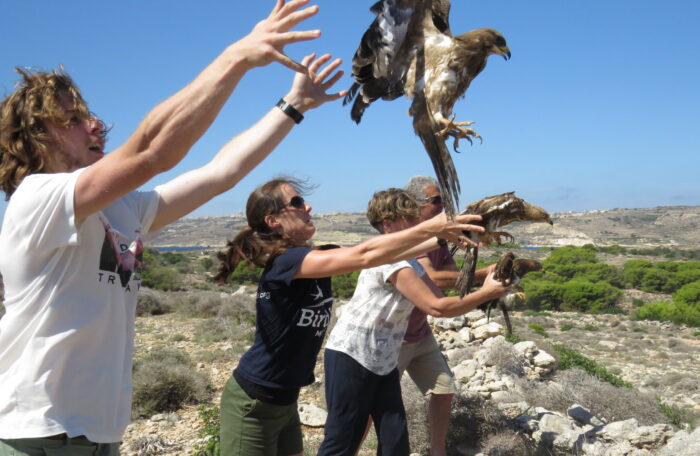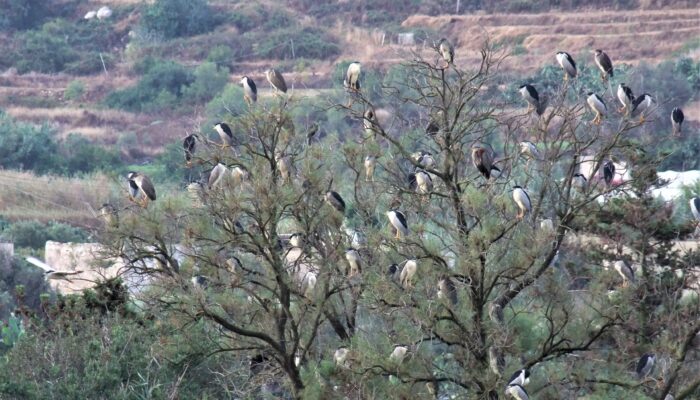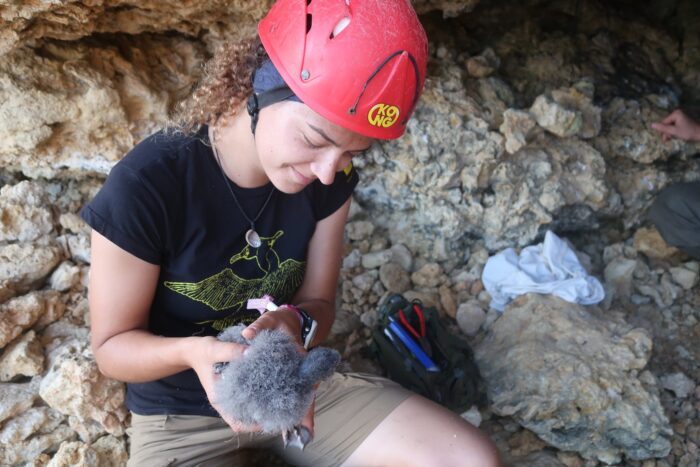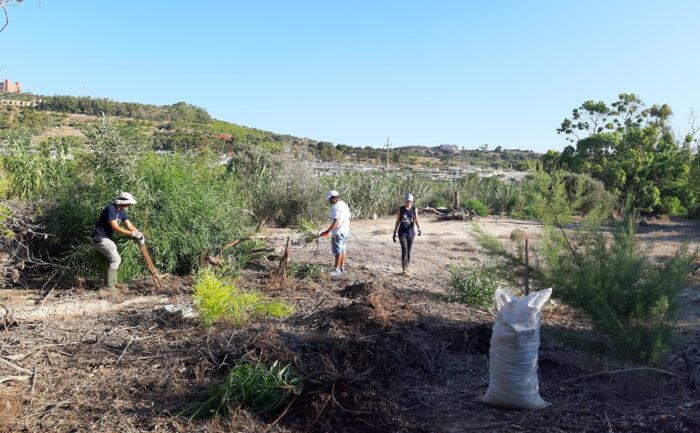Conservation news has a stigma for producing depressing stories on how badly the world is doing. New species every day at risk of extinction; acres of habitat being destroyed; human activities having a detrimental effect on nature. The sheer amount of bad news not only desensitises us to conservation issues, but can also make us feel at a loss as to whether the Earth can ever recover from such damage. It’s good to read about positive conservation stories to remind us that there is light in all the darkness.
Bird rehabilitation

Thanks to members of the public utilising our injured birds service, 94 birds have been successfully rehabilitated and released back into the wild this year so far. Some highlights of the year include the release of two Honey-buzzards (Kuċċarda) that were illegally shot during 2018’s autumn hunting season. After spending a year in our care, they were fit to fly free once again.
The Stone Curlew (Tellerita) is a scarce migrant in Malta, a vulnerable species and classified as a “Species of European Conservation Concern” by BirdLife International. This year, we received two illegally shot Stone Curlews into our care, and both were successfully rehabilitated and released.
Greater Flamingos (Fjamingu) arriving in Malta always catch the public’s attention. This year, four juvenile flamingos were found stranded, weak from their long journey. After spending time in our care, all four were released. One of them can still be seen at Għadira Nature Reserve.
Policy

Since the end of 2016, BirdLife Malta has been working with other international partners on a project on air pollution from ships. This October, the International Maritime Organisation (IMO) established a new ruling for ships to use low sulphur fuel which will reduce the amount of sulphur oxide emissions being released into the environment – benefitting both human health and the environment.
BirdLife Malta also participated in two main protests this year; Malta’s “Enough is Enough” demanding the government to put more effort into creating better protection for our environment, and the “Global Climate Strike” where millions of people around the world took a stand for the environment. These strikes resulted in the Maltese Parliament declaring a climate emergency.
Back in July, BirdLife Malta ran the #savedwejra campaign to appeal against further development in Dwejra, Gozo. The public donated generously, and alongside the University of Malta’s Institute of Space Sciences and Astronomy (ISSA) and on behalf of a front of 15 NGOs, we filed the appeal in court. A few days ago, we received the amazing news that the court appeal has been won and Dwejra has been saved!
Seabirds
Every year, BirdLife Malta receives calls from the public concerning stranded seabirds disorientated by light pollution. This year, we managed to return 22 stranded seabirds to their natural habitat. We have also made headway in the battle against light pollution that will help to reduce the occurrence of future strandings by raising public awareness, informing stakeholders, and rectifying some light pollution sources.
Our rodent control programmes under the LIFE Arċipelagu Garnija project are proving to be a great success with no signs of predation in colonies benefitting from control measures, resulting in a higher reproductive output of the breeding seabirds. The second-highest total of Yelkouan Shearwater (Garnija) fledglings (122) were ringed this year, another good indicator of our successful control programmes.
Reserves
Salina

A lot of work has been carried out this year to encourage breeding birds in Salina. Common Swift (Rundun) nest boxes were set up at the Visitors’ Centre, nest boxes were also put up in the trees for Spotted Flycatcher (Żanżarell tat-Tikek) and Tree Sparrow (Ġaħġaħ). Two clay islands were built in the inner salt pans with an area of pebbles as a way of providing breeding habitat for waders such as Black-winged Stilt (Fras-servjent) and Little Ringed Plover (Monakella).
The inner two salt pans have now been transformed into mudflats which makes ideal feeding grounds for waders who are specially adapted with long legs and bills to feed in shallow waters and mud.
But it’s not just good news for birds! The water control system was brought back into operation and the water levels vary in each saltpan providing a diverse habitat for our wildlife. Malta’s national fish, the Killifish (Bużaqq), is thriving in Salina, and another fish species spotted in the pans is the European Eel (Sallura), a critically-endangered animal and a good indicator of a healthy habitat.
Simar

Habitat restoration and creation was high on the agenda at Simar. Two small freshwater ponds with indigenous plants planted around were set up at the end of the small reserve, providing respite for birds and breeding habitat for insects such as dragonfly. The removal of the invasive tree species Lycium barbarum with the goal of eradicating it from the reserve is a big task that has been ongoing for several years. With the removal of this plant, native flora can be encouraged to grow and thrive at Simar. Some islands had their shorelines cleared of vegetation to create feeding habitats for waders and to encourage the growth of brackish vegetation such as Cressa cretica.
Bird highlights of the year include the arrival of four White-winged Black Terns (Ċirlewwa tal-Lvant) in May, the highest number ever recorded in the nature reserves, and the roosting of 180 Night Herons (Kwakka), and 120 Little Egrets (Agrett Abjad) in September, which again was a record for our reserves.
Għadira
Għadira saw great breeding success this year, with two pairs of Black-winged Stilt and two pairs of Little Ringed Plovers successfully rearing and fledging their chicks during the May-July period; totalling eight Black-winged Stilt chicks, and six Little Ringed Plover chicks.
A large number of birds were seen throughout the year at Għadira, notable species being Eurasian Spoonbill (Paletta), Bluethroat (Rożinjol Ikħal), and Mistle Thrush (Malvizzun Prim).
A big project this year is the restoration of the sand dunes. Thanks to the Farsons Foundation which is sponsoring part of the project, we were able to make some progress on it. The sand dunes will help to serve as an educational area for school children and show them the importance of the habitat and the rare species that depend on it such as the Sea Daffodil (Pankrazju Selvaġġ).
On World Wildlife Conservation Day today, we celebrate our work in wildlife conservation. We promise to continue working to bring even more good news to all who share our love for nature!
By Steph Leow, BirdLife Malta Conservation Assistant


